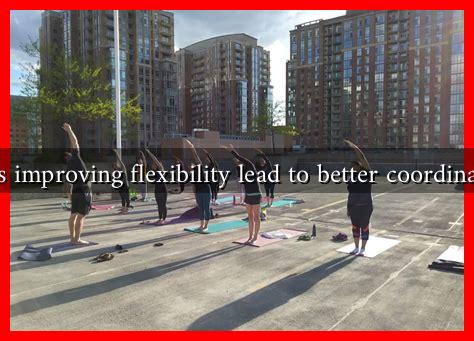-
Table of Contents
Does Improving Flexibility Lead to Better Coordination?
Flexibility and coordination are two essential components of physical fitness that often go hand in hand. While flexibility refers to the range of motion in joints and muscles, coordination involves the ability to use different parts of the body together smoothly and efficiently. This article explores the relationship between flexibility and coordination, examining whether improving flexibility can indeed lead to better coordination.
The Importance of Flexibility
Flexibility is crucial for overall physical health and performance. It allows for greater movement efficiency, reduces the risk of injuries, and enhances athletic performance. Here are some key benefits of flexibility:
- Injury Prevention: Flexible muscles and joints are less prone to strains and sprains.
- Improved Posture: Flexibility can help maintain proper alignment of the body.
- Enhanced Performance: Athletes often experience improved performance in their respective sports with increased flexibility.
According to a study published in the *Journal of Sports Science & Medicine*, athletes with greater flexibility tend to perform better in their sports, particularly in activities that require a wide range of motion, such as gymnastics and dance.
Understanding Coordination
Coordination is the ability to use different parts of the body together effectively. It involves the integration of sensory input and motor output, allowing for smooth and efficient movements. Coordination is vital in various activities, from sports to daily tasks. Key aspects of coordination include:
- Balance: The ability to maintain stability while moving or stationary.
- Timing: The ability to execute movements at the right moment.
- Agility: The ability to change direction quickly and efficiently.
Improving coordination can lead to better performance in sports and everyday activities, making it a critical focus for athletes and fitness enthusiasts alike.
The Link Between Flexibility and Coordination
Research suggests that there is a significant relationship between flexibility and coordination. Here are some ways in which improving flexibility can enhance coordination:
- Increased Range of Motion: Greater flexibility allows for a wider range of motion, which can improve the execution of coordinated movements.
- Enhanced Muscle Control: Flexible muscles can contract and relax more effectively, leading to better control over movements.
- Improved Balance: Flexibility contributes to better balance, which is a crucial aspect of coordination.
A study conducted by the *American College of Sports Medicine* found that individuals who engaged in regular flexibility training showed marked improvements in their coordination skills, particularly in activities requiring complex movements.
Case Studies and Real-World Examples
Several athletes and fitness programs have demonstrated the benefits of flexibility training on coordination:
- Gymnasts: Gymnasts require exceptional flexibility and coordination. Training routines that focus on flexibility often lead to improved performance in routines that demand precise movements.
- Dancers: Dance training emphasizes flexibility, which is crucial for executing complex choreography with grace and precision.
- Martial Artists: Many martial arts disciplines incorporate flexibility training, which enhances coordination during techniques and sparring.
These examples illustrate how flexibility training can lead to improved coordination in various sports and activities.
Conclusion
In conclusion, improving flexibility can indeed lead to better coordination. The relationship between these two components of physical fitness is supported by research and real-world examples. By enhancing flexibility, individuals can experience increased range of motion, better muscle control, and improved balance, all of which contribute to superior coordination. Whether you are an athlete or someone looking to improve your overall fitness, incorporating flexibility training into your routine can yield significant benefits. For more information on flexibility training, consider visiting resources like the American College of Sports Medicine.

